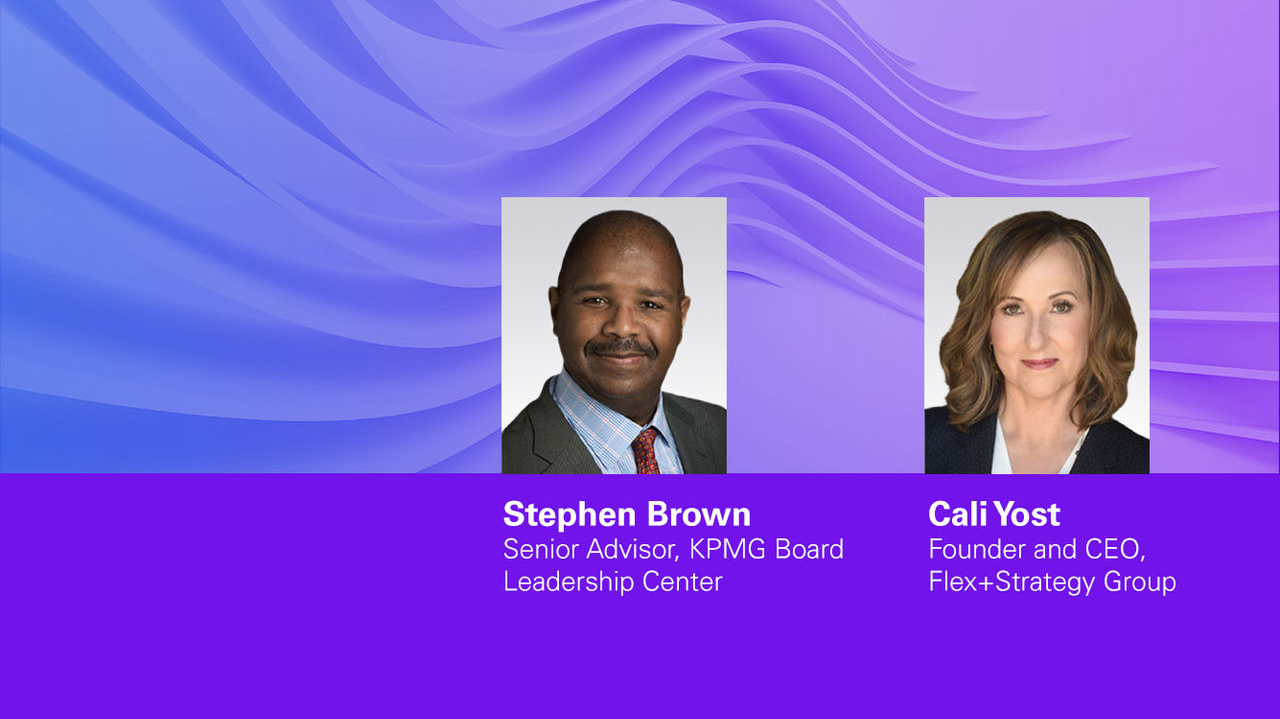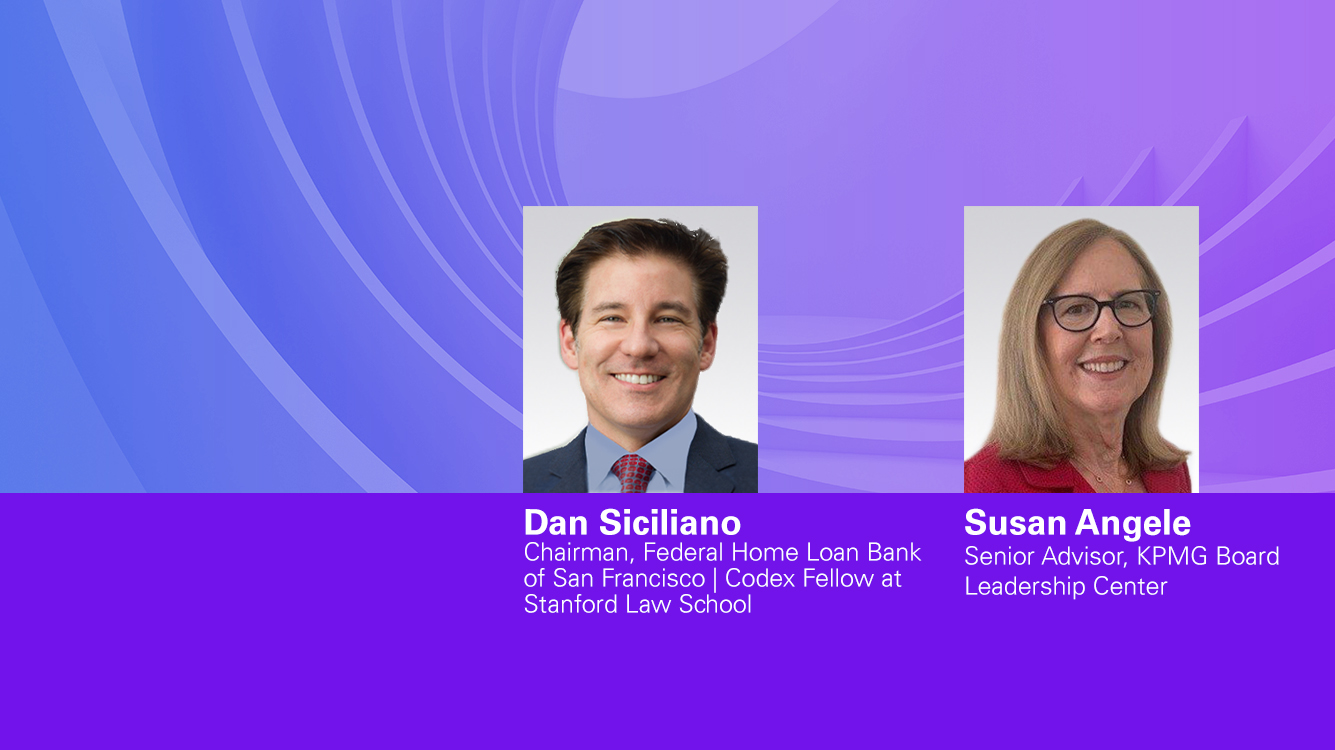Strategy and corporate performance
Insights and developments from a board perspective on strategy and corporate performance.

Featured board insights and programs

Quarterly webcast: A Boardroom Lens on Generative AI
A discussion on transformational implications of generative AI—opportunities, risks, and disruptions ahead—and how boards can help their companies navigate the promise and pitfalls of this game-changing technology.

On the 2024 compensation committee agenda
Five issues for compensation committees to keep in mind as they consider and carry out their 2024 agendas.

Measuring what matters
KPMG Chief Economist Diane Swonk shares her views on GDP and other metrics in today’s more services-based economy.
Strategy and Corporate Performance
KPMG Board Diversity Disclosure Benchmarking Tool
Track board diversity disclosures using the KPMG Board Diversity Disclosure Benchmarking Tool.
Strategy and Corporate Performance Video Insights
Receive the latest insights from the Board Leadership Center
Sign up to receive Board Leadership Weekly and Directors Quarterly



